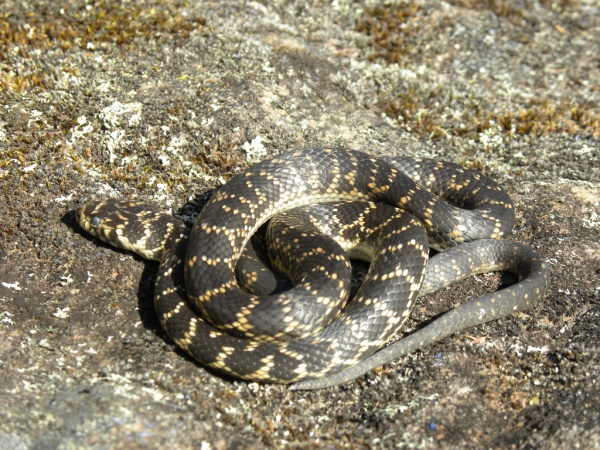Facts About Broad-headed snake
The broad-headed snake, a venomous species endemic to the Sydney Basin in New South Wales, Australia, is a fascinating yet endangered reptile. Part of the Hoplocephalus genus, this snake is one of three species found in eastern Australia. Regrettably, it is currently listed as endangered in New South Wales and classified as Vulnerable under Commonwealth legislation.
The broad-headed snake is a small to medium-sized venomous snake, typically reaching around 60 cm in length, though some individuals can grow up to 90 cm. Its striking black body features irregular yellow markings arranged in narrow cross-bands. This pattern can sometimes cause confusion with young Diamond Pythons, which have a similar appearance.
These snakes are indigenous to the Sydney Basin, and their habitat preferences change with the seasons and their life stages. During the colder months, they seek warmth in sandstone crevices on cliff edges. As temperatures rise, they migrate to woodlands and forests. Unfortunately, urbanization, rock removal, and reptile collecting have significantly impacted their natural habitats, leading to a decline in their population.
Broad-headed snakes have a varied diet, feeding infrequently on small reptiles and mammals. Juveniles, in particular, tend to prey on Lesueur's velvet geckos. Breeding occurs from autumn to spring, with females giving birth to live young between January and April. Each litter usually consists of 4 to 12 offspring.
Once a common sight around Sydney, the broad-headed snake is now endangered in New South Wales. Habitat loss due to urbanization, rock removal, and irresponsible collecting has severely affected their numbers. Consequently, they are listed as Vulnerable under national legislation. Conservation efforts are essential to protect this unique species from further decline.
